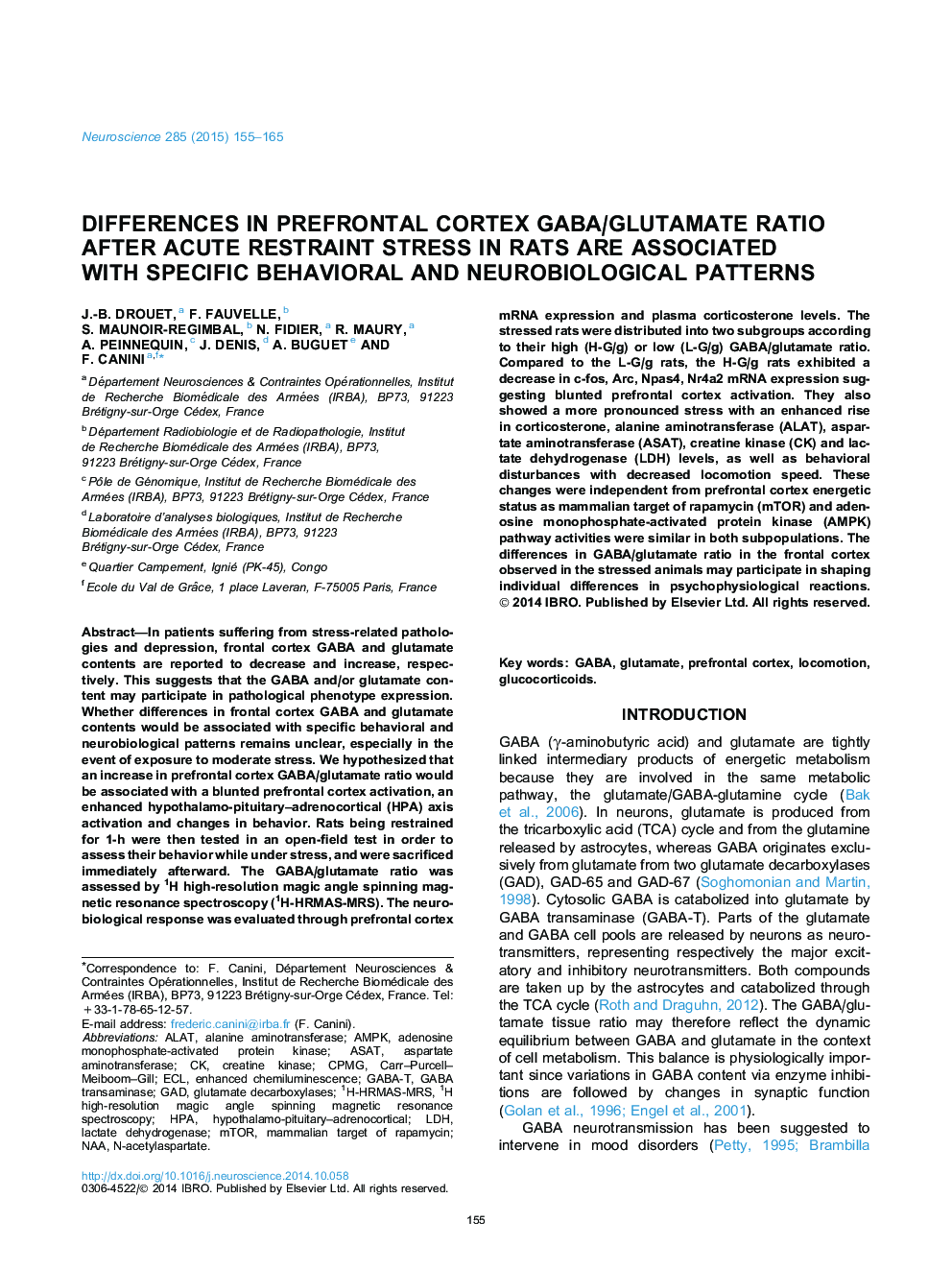| کد مقاله | کد نشریه | سال انتشار | مقاله انگلیسی | نسخه تمام متن |
|---|---|---|---|---|
| 6273159 | 1614791 | 2015 | 11 صفحه PDF | دانلود رایگان |

- After 1Â h restraint, the rats increased their prefrontal cortex GABA and glutamate contents.
- The stressed rats can be classified according to GABA/glutamate ratio (High G/g vs. Low G/g).
- The H-G/g rats presented decreased prefrontal cortex activation and increased HPA axis activation featuring an enhanced stress.
- The H-G/g rats had a reduced locomotion speed together with neophobia and sustained exploration behavior in open field.
- The prefrontal G/g ratio might underpin the stress-related inter-individual variability.
In patients suffering from stress-related pathologies and depression, frontal cortex GABA and glutamate contents are reported to decrease and increase, respectively. This suggests that the GABA and/or glutamate content may participate in pathological phenotype expression. Whether differences in frontal cortex GABA and glutamate contents would be associated with specific behavioral and neurobiological patterns remains unclear, especially in the event of exposure to moderate stress. We hypothesized that an increase in prefrontal cortex GABA/glutamate ratio would be associated with a blunted prefrontal cortex activation, an enhanced hypothalamo-pituitary-adrenocortical (HPA) axis activation and changes in behavior. Rats being restrained for 1-h were then tested in an open-field test in order to assess their behavior while under stress, and were sacrificed immediately afterward. The GABA/glutamate ratio was assessed by 1H high-resolution magic angle spinning magnetic resonance spectroscopy (1H-HRMAS-MRS). The neurobiological response was evaluated through prefrontal cortex mRNA expression and plasma corticosterone levels. The stressed rats were distributed into two subgroups according to their high (H-G/g) or low (L-G/g) GABA/glutamate ratio. Compared to the L-G/g rats, the H-G/g rats exhibited a decrease in c-fos, Arc, Npas4, Nr4a2 mRNA expression suggesting blunted prefrontal cortex activation. They also showed a more pronounced stress with an enhanced rise in corticosterone, alanine aminotransferase (ALAT), aspartate aminotransferase (ASAT), creatine kinase (CK) and lactate dehydrogenase (LDH) levels, as well as behavioral disturbances with decreased locomotion speed. These changes were independent from prefrontal cortex energetic status as mammalian target of rapamycin (mTOR) and adenosine monophosphate-activated protein kinase (AMPK) pathway activities were similar in both subpopulations. The differences in GABA/glutamate ratio in the frontal cortex observed in the stressed animals may participate in shaping individual differences in psychophysiological reactions.
Journal: Neuroscience - Volume 285, 29 January 2015, Pages 155-165